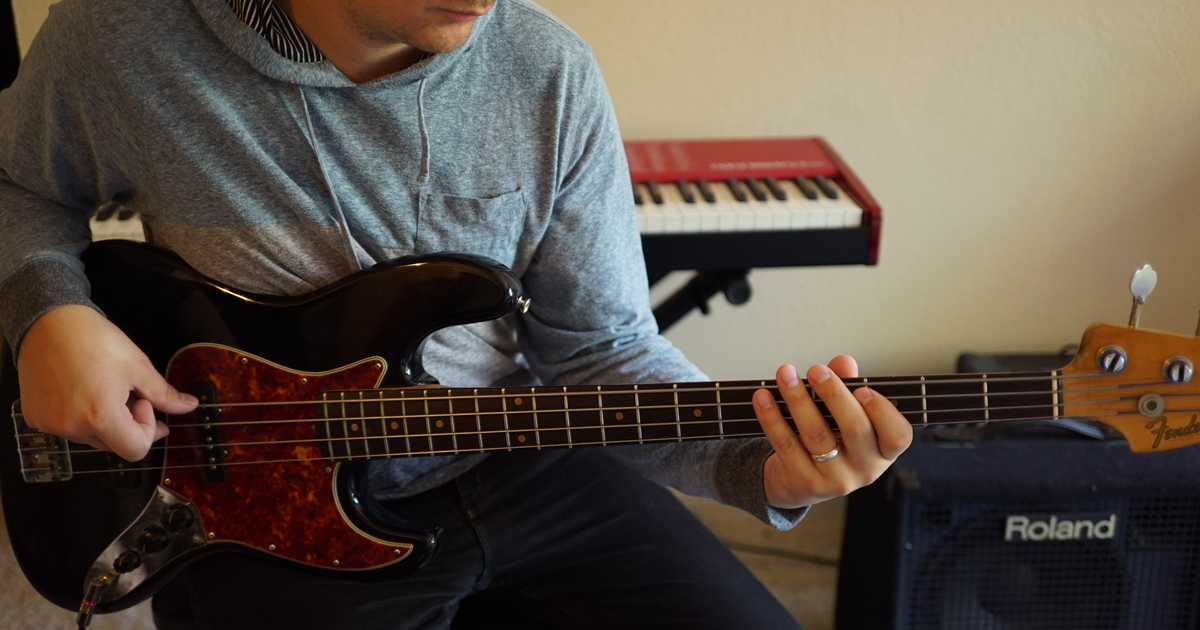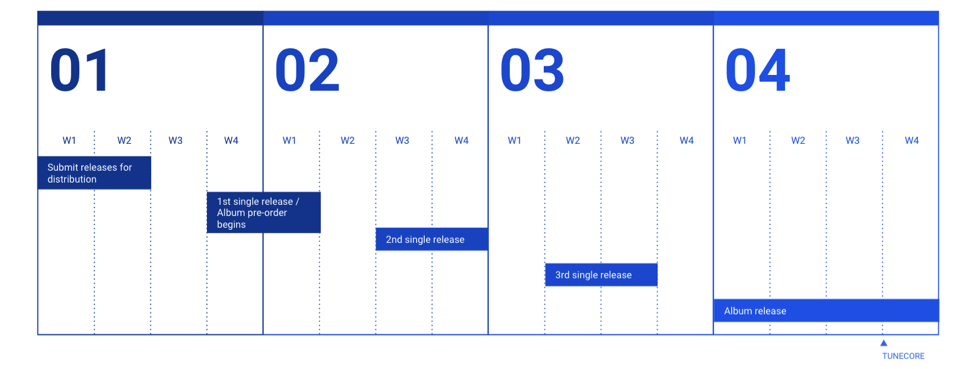Best practices: Picking your music release date
For artists preparing to drop new music, choosing a release date might seem like one of the more straightforward parts of your release strategy, but there is a significant amount of nuance that goes into choosing the optimal time. Here, we help narrow it down.
Guest post by Daniel Iammatteo of Soundfly’s Flypaper
Whether you’re finishing up a new record or have your music ready for release, crossing the finish line means choosing a release date. And though it may seem like a relatively straightforward decision to make, it can have even the most industry-savvy artists second-guessing themselves.
Though there is no “right” release date, but when strategically picked, it can optimize the effectiveness of a marketing campaign and maximize your reach to new fans. This is a guide to help you figure out when that date might be.
1. Lead Time
Lead time, in my own words, is the amount of time it takes to make stuff happen. You may be thinking, “I really just want to drop a single,” and I hear you. But just in case you’re curious, let me explain lead time in the digital music supply chain.
To start, try thinking of Digital Service Providers (DSPs) like Spotify and Apple Music as grocery stores. You, the artist, are the farmer and your new music is your produce. Now, you could go around to each store directly with your produce to sell (also known as direct deals), but odds are you’ll just want to pay someone to deliver it for you to ALL stores worldwide.
This is why distributors like our friends at TuneCore exist; and while you cannot see your music go out to DSPs in batches on delivery trucks, this is essentially what they’re doing via *tech*.
After uploading your release for distribution, it goes from their tech team to tech teams on the DSP side where your release then gets ingested into their backends (think of this as stocking the shelves).

All this said, lead time is your friend so give yourself plenty of it. You don’t want to be stuck promoting a new single that didn’t go live.
TLDR: Pick a release date that is at least 3-4 weeks out from when you upload your music to TuneCore.
+ Learn production, composition, songwriting, theory, arranging, mixing, and more — whenever you want and wherever you are. Subscribe for unlimited access!

2. Take Stock
If all you consider is lead time, picking a release date might be as easy as looking at the calendar and counting four weeks ahead. And you could do that, but a new release is an opportunity to take stock of your standing in the industry.
Is this your first release? Or do you have a small team of people behind you? Perhaps this “team” only consists of your mom who sews or a friend who has an old camcorder?
No matter what resources you have, figure out what is doable for you and set some reasonable goals for your release. This might look like establishing KPIs (key performance indicators) for a low-budget social media marketing campaign or setting up a larger scale album release strategy with a publicist that will span a few months.
TLDR: Figure out what you want to achieve and what/who you have to work with.
3. Context
After setting some goals, you can narrow your window of possible dates even further by looking at the context clues surrounding your release. Start researching any similar artists in your space of the industry.
- Do they have releases coming up? If they do, you’ll want to release around that (unless you think the competition would help you somehow).
- Is the lead single from your album getting radio promotion? If so, which stations? It’s kind of difficult getting college radio to play your record when they’re on winter break.
- Will you be supporting the album release with a gorgeous music video shot by your favorite director? Better find out when they’re available and what they charge first.
- Perhaps there is a venue or brand you really want to partner with on your release. What is a date that works for both of you?
TLDR: There are factors outside of your direct efforts that if you consider can make your release date more strategic.
+ Read more on Flypaper: “Your Email List Is Still More Important Than Your Social Channels. Here’s Why.”
4. Truth or Talk?
While I know the above steps are easier said than done — and represent hours of thinking and planning — it is worth it to put in the work. An intentional and well-executed release can grab the attention of more fans and industry players.
Speaking of which, here are some industry tips you may have read about online. Let’s go through these and discuss if there is any TRUTH to them or if they’re all just TALK.
Release schedules are bothersome for fans, you should drop your new music.
TALK.
Even when high-profile releases are “dropped,” those teams are still doing the behind the scenes work. For example, even in a “drop” campaign, ‘singles’ might still be identified as and called focus tracks to be pitched to editors for press and playlisting. Additionally, while “drop” campaigns do not build audience attention ahead of the release date, all those efforts are concentrated into maximizing attention after the release (a different challenge altogether).
New music only comes out on Fridays.
TALK.
While the industry plans new releases on Fridays due to store playlisting, music lovers are always looking for new music. In fact, it might even be better for you to release off-cycle, or earlier in the week, if it means getting more concentrated attention from your fans.
Pre-save campaigns are imperative.
TRUTH.
Giving your fans the opportunity to pre-order, pre-save, or pre-add your release is strongly advised for new releases. Please keep in mind that you need to extend lead time to account for this as it takes more coordination on your end, but a successful “pre-” campaign helps your release gain cumulative momentum.
Industry tip: The numbers you generate in a “pre-” campaign are counted towards your first-week streams/sales, making a more compelling case for your music to get playlisted by store editors.
The most important thing is getting your new music out as soon as possible. Just release-release-release.
TRUTH.
The best way to reach new audiences is to release new music. If you’re creating, then you should be releasing. There is freedom in being an indie artist, so why not take advantage of that? Do this smartly and only release music you feel proud of, but don’t be too trepidatious when releasing your music. Music that goes unreleased goes unheard.
5. You Can Copy My Homework
Just in case you’re still unsure of how or when to release your music, I’ve included an example of a sample schedule for a traditional singles-to-album release below. Feel free to copy this model for your use or adjust it to one that best suits your needs.

Good luck.
—
Daniel Iammatteo is a Content Specialist on TuneCore’s Entertainment Relations team.
Really nicely written article. really useful for upcoming musicians.